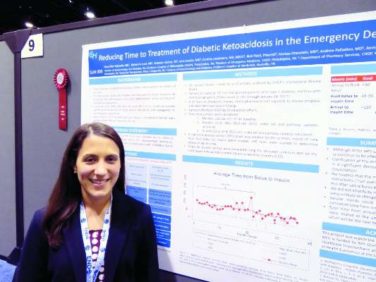FROM JAMA
The use of oral fluconazole during pregnancy significantly raises the risk of spontaneous abortion, according to a report published online Jan. 5 in JAMA.
In a nationwide cohort study in Denmark involving more than 1.4 million pregnancies that occurred from 1997-2013, oral fluconazole increased the risk of spontaneous abortion from 7-22 weeks gestation, compared with no exposure to fluconazole and with exposure to a topical azole.
The drug did not raise the risk of stillbirth significantly in this study, “but this outcome was relatively rare and the results were therefore imprecise,” wrote Ditte Molgaard-Nielsen of the department of epidemiology research, Statens Serum Institut, Copenhagen, and associates.
The study findings indicate that “cautious prescribing of oral fluconazole in pregnancy may be advisable,” at least until more data regarding this association become available.
Pregnant women are at increased risk for candidiasis because of hormonal changes, and the prevalence of the infection is estimated to be 10% among pregnant women in the U.S. Intravaginal topical azoles are considered first-line treatment during pregnancy, but oral fluconazole can be used instead if the patient prefers it, in recurrent cases, or if symptoms are severe.
Long-term, high-dose oral fluconazole is associated with distinct craniofacial and skeletal birth defects, and most safety studies have focused on the possible teratogenic effects of the lower doses typically used during pregnancy. Only two epidemiologic studies to date have assessed a possible association with spontaneous abortion and stillbirth, and both “may not have had sufficient power to detect even a moderately increased risk,” the investigators wrote.
To examine a possible association between oral fluconazole use and spontaneous abortion (pregnancy loss at 7-22 gestational weeks) or stillbirth (pregnancy loss at 23 weeks or later), the investigators analyzed data in a national registry of all births, stillbirths, spontaneous abortions, induced abortions, ectopic pregnancies, cases of hydatidiform mole, and all other abnormal products of gestation. They correlated this with data in registries of all hospitalizations and all prescriptions filled in Denmark, focusing on the period from 1997-2013.
There were 3,315 pregnancies in which the mother received oral fluconazole during weeks 7-22, and these were matched for propensity score and maternal age with 13,246 control pregnancies. A total of 147 spontaneous abortions occurred in the exposed group and 563 in the control group. Exposure to oral fluconazole significantly increased the risk of spontaneous abortion, with a hazard ratio (HR) of 1.48, the investigators found ( JAMA. 2016 Jan;315(1):58-67. doi: 10.1001/jama.2015.17844 ). In a further analysis that controlled for confounding by underlying disease (vaginal candidiasis), pregnancies exposed to oral fluconazole were at significantly higher risk of spontaneous abortion compared with both pregnancies exposed to topical azoles (HR, 1.62) and those exposed to pivmecillinam (HR, 1.44).
In addition, there were 5,382 pregnancies in which the mother received oral fluconazole during weeks 23 onward, and these were matched with 21,506 control pregnancies. A total of 21 stillbirths occurred in the exposed group and 77 in the control group. The hazard ratio for stillbirth in exposed pregnancies, compared with control pregnancies, was 1.32, which was not statistically significant. However, this result should be interpreted with caution because of the small numbers in these categories, the investigators wrote.






